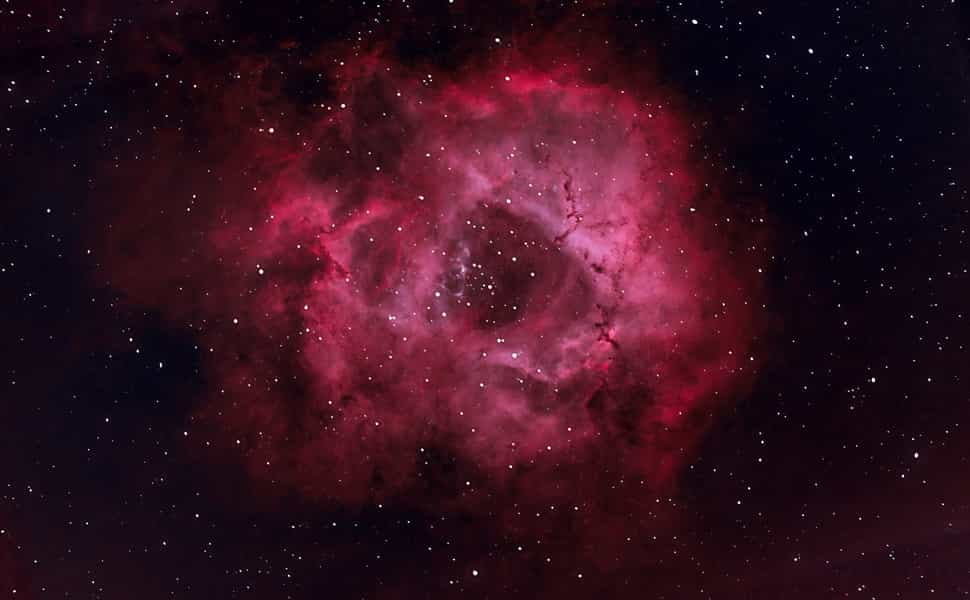Blog
Table of Contents

Rosette Nebula is Really Beautiful
The Rosette nebula (NGC 2237) is a large ionized hydrogen region located at the end of a giant molecular cloud in the constellation Kylin. This molecular cloud group includes five NGC objects: NGC 2237, NGC 2238, NGC 2239, NGC 2244, and NGC 2246. The open star cluster NGC 2244 is closely related to the Rosette nebula, and the stars within NGC 2244 are formed from the material of the Rosette nebula. The cluster and nebula are approximately 5200 light-years away from Earth and have a diameter of approximately 130 light-years. The mass of the nebula is estimated to be about 10000 times the mass of the sun.
Let's explore in depth.
The beautiful Rosette nebula NGC 2237 is a large emission nebula 3000 light-years away. In the center of the nebula, there is an open star cluster named NGC 2244, and the stellar wind emitted by the stars in the cluster has blown a large hole in the center of the nebula. These stars were formed from the clouds around them about four million years ago, and the edge of the hole has a layer of dust and hot clouds separating it. The ultraviolet radiation emitted by this hot star dissociates the surrounding clouds, causing them to glow. The nebula is rich in hydrogen gas, which, excited by young bright stars, gives NGC 2237 a red color in most photos. The most unique feature of this image is that its color is different from common photos of the Rosette nebula.
The star clusters of the Rosette nebula NGC 2244 are not all red, but they are still very beautiful. In celestial imagery, the beautiful Rosette nebula and other star forming regions are always dominated by red, partly because the dominant emission in the nebula is generated by hydrogen atoms. The intense visible light of hydrogen atoms, H-alpha, is a red light band in the spectrum, but beautiful emission nebulae require more than just red light. Other atoms in the nebula are also excited by high-energy starlight, which also forms narrow waves to emit light.

(The Rose Nebula shared by Bruce Stoneman,we are honored to quote it.)
In this gorgeous image of the central region of the Rosette nebula, the narrow wave image is synthesized, with sulfur atoms emitting red light, hydrogen atoms emitting blue light, and oxygen atoms emitting green light. In fact, using these narrow wave atomic emission rays to represent color has also been used in many Hubble images of stellar nurseries.
So what products can you use to capture it from svbony?
SV503 102ED Refractor & 0.8x flattener reducer
I wonder what filter you would choose to capture it with?
Thank you for reading, welcome to comment.


There are no customer reviews yet . Leave a Reply !